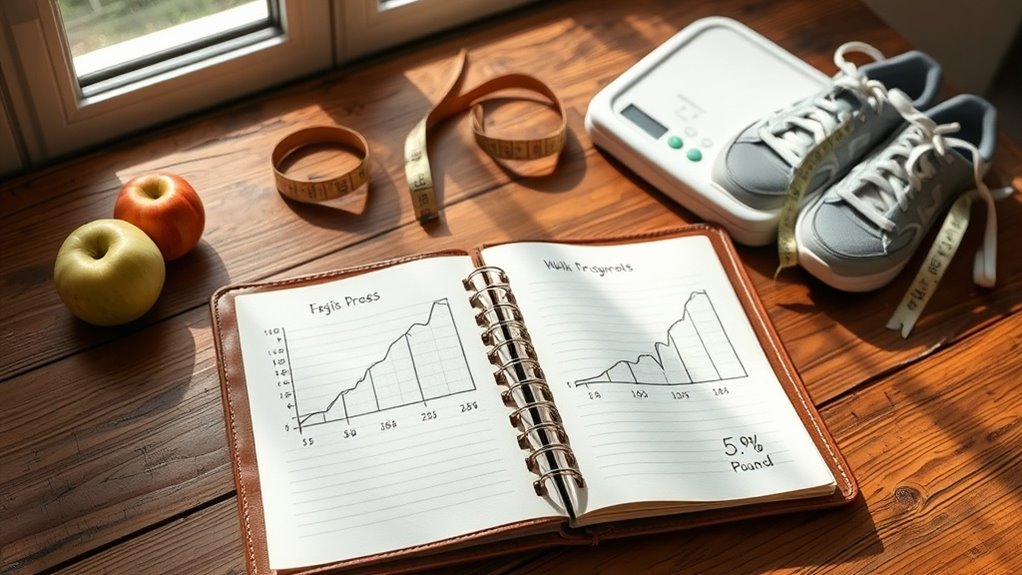This One Change Made My Clothes Fit Better in a Week
Understanding the Importance of Fit
Fit is crucial when it comes to clothes; after all, a well-fitted garment can transform your appearance and boost your confidence.
When you understand the importance of fit, you’ll notice how clothes fit better, enhancing your silhouette and making you feel more comfortable.
An investment in tailoring can take your wardrobe to another level, ensuring you always look and feel your best. Additionally, meal planning can enhance your overall well-being, contributing to your confidence in how your clothes fit.
Identifying Your Current Wardrobe Challenges
Many people struggle with wardrobe challenges that prevent them from feeling their best. To pinpoint what’s holding you back, consider the following:
- Clothes that don’t flatter your body shape
- Limited versatility in outfit combinations
- Inconsistent sizing across brands
Recognizing these issues can pave the way for a more tailored approach, ultimately making your wardrobe work harmoniously for you.
The One Change: Tailoring vs. Adjustments
When it comes to achieving the perfect fit, you’ve got two main options: tailoring or easy adjustments at home.
Each choice offers its own set of benefits and costs, so understanding the differences can help you make an informed decision.
Let’s explore how tailoring can transform your clothes versus the quick fixes you can tackle yourself.
Tailoring Benefits Explained
A skilled tailor can transform your wardrobe in ways you mightn’t expect.
Tailoring your clothes not only enhances their fit but also elevates your overall style. Here’s why you should consider it:
- Achieves a polished appearance
- Accommodates your unique body shape
- Extends the lifespan of your favorite garments
Investing in tailoring can turn ordinary pieces into extraordinary ones.
Easy Adjustments at Home
While skilled tailoring can dramatically enhance your wardrobe, there are also simple adjustments you can make at home to improve fit and comfort. Here are a few tweaks worth trying:
| Adjustment | Description |
|---|---|
| Hemming | Shorten pants or skirts easily. |
| Taking in Sides | Fit blouses and shirts snugly. |
| Belt Loops | Add for better waist adjustment. |
| Ironing & Steaming | Remove wrinkles for a polished look. |
| Button Replacement | Change for style or fit. |
Cost Comparison: Tailoring vs. Adjustments
Understanding the financial impact of tailoring versus simple adjustments can help you make informed decisions about your wardrobe.
Tailoring offers precision, while adjustments are budget-friendly. Consider the following:
- Tailoring costs range from $15 to $100, depending on complexity.
- Simple adjustments can be done at home with minimal tools.
- Tailoring enhances the overall look, while adjustments provide quick fixes.
Evaluate your needs to choose wisely!
How to Measure Your Current Fit
To get your clothes fitting just right, you need to understand key measurement points like bust, waist, and hips.
Assessing different fit styles will help you determine what works best for your body shape.
Plus, being aware of common size mistakes can save you from unnecessary wardrobe malfunctions.
Key Measurement Points
Getting the right fit for your clothes starts with knowing a few key measurement points.
These measurements will help you understand how to find what suits you best.
-
Bust: Measure around the fullest part of your bust.
-
Waist: Measure at the narrowest part of your waist.
-
Hips: Measure around the widest part of your hips.
With these points, you’re on your way to a better fit!
Assessing Fit Styles
Finding the perfect fit isn’t just about numbers; it’s about how those numbers translate into comfort and confidence when you wear your clothes. To assess your current fit, consider the following measurements:
| Measurement | Ideal Fit | Your Fit |
|---|---|---|
| Shoulder Width | Relaxed | |
| Bust/Chest | Snug but not tight | |
| Waist | Comfortable | |
| Hip | Room to move | |
| Sleeve Length | Hits wrist |
Common Size Mistakes
Many people overlook key details when measuring their fit, leading to ill-fitting clothes that can affect both comfort and style.
To ensure you get it right, focus on these common size mistakes:
- Not using a flexible measuring tape.
- Forgetting to measure with your usual undergarments on.
- Ignoring the need for movement when sizing.
Getting these right transforms your wardrobe!
Implementing the Change: Steps to Follow
As you embark on your journey to transform your wardrobe, implementing change requires a clear plan of action.
Start by assessing your current pieces and identifying what truly fits.
Next, create a checklist of items that need alterations or replacements.
Finally, set a deadline for sourcing new clothing or making adjustments, keeping goals realistic and focused to ensure success within the week.
Monitoring Progress Over the Week
Once you’ve laid the groundwork for your wardrobe transformation, keeping an eye on your progress throughout the week becomes vital.
Monitor your alterations closely to embrace any changes.
- Take weekly photos to visualize your progress.
- Keep a journal of what fits better.
- Note any challenges you face to adjust your approach.
This awareness helps you stay motivated and inspired.
Enjoying Your New Look and Feel
Embracing a newfound confidence feels invigorating as you step into clothes that fit just right. The compliments pour in, and you can’t help but smile at your reflection.
This transformation isn’t just about appearances; it boosts your mood and encourages a more vibrant lifestyle. Celebrate your style, experiment with outfits, and enjoy the spark that these perfectly fitting pieces bring to your everyday life.





